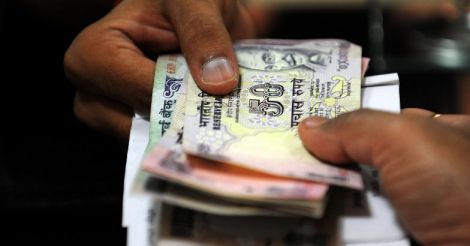A severe financial crunch awaits the next Kerala government. The treasury is almost empty. The revenue deficit in 2015-16 will easily cross Rs 1,500 crore after the government pays up all dues including increased salaries. The state is required to be revenue deficit-free by 2017-18, if it has to meet with a deadline set by the 14th Finance Commission. The state has to repay about Rs 42,000 crores in the next seven years, the accountant general estimates.
The next government has a Herculean task in fulfilling its promises.
Kerala has landed in a debt trap thanks to a provision that allows the state to borrow up to 30 percent of its gross domestic product. This borrowing mainly benefits the middle class who draw government salaries and pension. This has to change. The government has no other alternative but resource mobilisation. Kerala has tremendous potential in this area. Kerala leads other states in per capita consumption since 1999-2000. However, about 57 percent of the state’s revenue comes from fuel, motor vehicles, liquor and lottery.
Recommended: New Govt needs to focus on ailing public healthcare system
Liquor and lottery contributed 34 percent of revenue in 2015-16. Resource mobilisation through these two items put a huge burden on the poor and the marginalised. The successive governments in Kerala has been mobilising resources from the weaker sections and routing them to the upper and middle classes.
Resource mobilisation and utilisation have to undergo a sea change especially in the backdrop of the increasing economic inequality. This is perhaps the greatest challenge faced by the next government.
The spawning of political parties and the coalition politics are the greatest impediments to resource mobilisation. Kerala’s dominant politics has always tried to cover up the fact that a government owed its existence to the taxes the people paid. Society has come to believe that resources appear out of thin air.
That is why the people ask for more when the government rolls out populist measures. The next government’s prime task is to free the people from this notion. After all the state government cannot mint money. The people themselves have to shoulder the burden of all welfare measures. This has to be drilled into the public opinion. The government should have the guts to declare that public services do not manifest on their own and the people have to cut down on consumption to mobilise resources.
The government could overcome the resistance to an increase in taxes if it is able to create a deeper commitment to resource mobilisation in society. At the same time, the government has to revamp the utilisation of public resources to channel more of it to the poor and the lower-income groups. This, in turn, will help the government to mobilise more resources.
Be frank with the people and take them into confidence. That is the only solution for the crisis Kerala is in.
(The writer is a faculty member of the Gulati Institute of Finance and Taxation in Thiruvananthapuram. The views are personal.)

























